Think Sleeveless is Faster? Then You Haven’t Tried De Soto
I'm going to write about De Soto's T1 wetsuits today, knowing you are more likely to buy another brand of wetsuit. The De Soto suit is a 2-piece suit and if you don't choose it it's because it's too… non-standard. Nevertheless, you need to know about this suit, and the more difficult it is for you to comfortably fit into a fullsuit (long-armed wetsuit) the more you become a candidate for it.
Last week a reader on our forum asked the "full or sleeveless wetsuit" question. This pops up almost annually on our forum, and I'll get to this in a minute because it speaks to the utility of this particular fullsuit. (De Soto makes a sleeveless, but don't settle; its fullsuit is what you want.)
But first! We just took a poll and 5 percent of respondents elected De Soto as the wetsuit they're likely to buy. This is way too low. The first choice in that poll was ROKA and for good reason. Second was blueseventy. Both great suits! I have them both, I love them both, I'll be writing about them soon. Further, when I made wetsuits (Quintana Roo was my company, and I founded it in 1986 to sell the first of the wetsuits triathletes like you and I buy today) I only made 1-piece suits, much like ROKA and blueseventy, Orca and all the others.
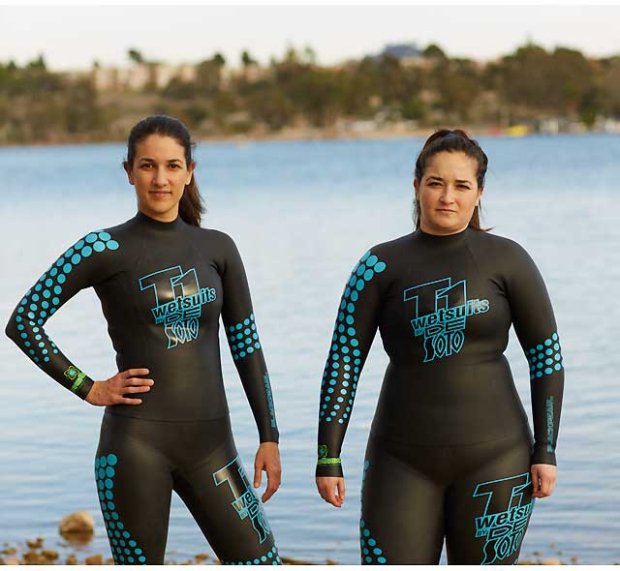
But I had to keep making new sizes, one after another, and for the 8 years I owned my company and the 13 years in all that I ran it I never stopped creating another size, and another, because the human body comes in so many variations.
Now, back to the question of arms in a wetsuit. "Sleeveless [suits have] more shoulder mobility,” one Slowtwitcher offered. "Typically better for more advanced swimmers or someone [who] is top-heavy."
One Slowtwitcher with a competitive swim background, wrote, "Last time I tried a sleeved suit I was slower than in my sleeveless due to shoulder fatigue.”
"If your upper body does look like [a V shape] get a sleeveless, you will waste more energy and send your heart rate sky high trying to swim in a sleeved suit and likely swim slower than a sleeveless.”
I don't dispute anyone's experience, but I don't agree with any of these conclusions!
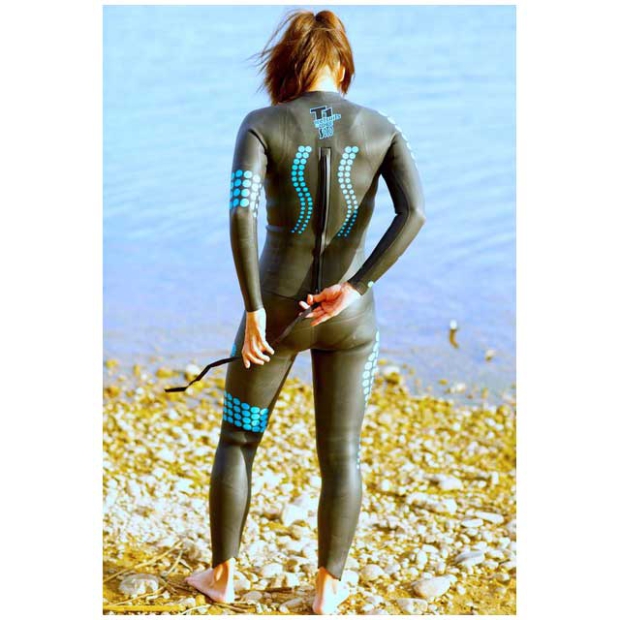
Another wrote, "Sleeves are just generally faster. The exception would be a very advanced Div 1 type college swimmer because they have such a refined stroke.” I've never found the D1 swimmer to be an exception to the "sleeves are faster” rule. Another Slowtwitcher decided it was the opposite: That the slowest swimmers would benefit from the sleeveless, because their technique isn't good enough to see the value of a full sleeve suit.
Nope. I never found that either. Further, no ITU athlete, male or female, feels that way. And I mean none of them or, if I'm wrong about that, you'll have to look very hard to find the exception to the rule. (I have a lot of swim start pics I can show you!)
One Slowtwitcher wrote that he conducted his own test, a series of 5 X 100 meters in a full sleeve suit, total time 5:57, and again in a sleeveless, average time 6:08. He concluded, "two seconds per 100 meters.”
Yeah, that's about right. I would routinely get 7 to 8 seconds per 100 yards of speed savings (versus no wetsuit at all) in a fullsuit, and my longjohns (sleeveless suits) were about 2 seconds slower per 100 yards than my fullsuits. But we always made, and sold, sleeveless suits. Why? Because people bought them.
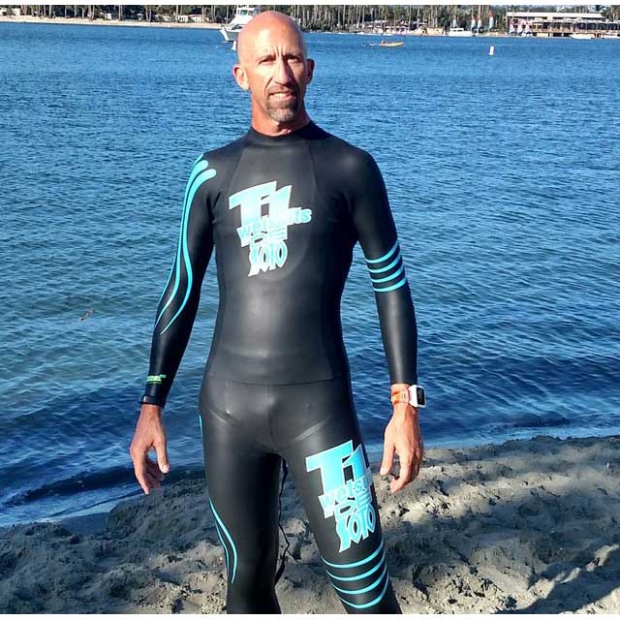
What does any of this have to do with this particular wetsuit? The De Soto T1? It's because a lot of people have trouble with how their wetsuits fit. Remember all those sizes I had to make? Like, Extra Large Short, which was a suit with the circumferences of a person needing an XL, but with a fireplug body.
"Fit is near impossible for me,” wrote one Slowtwitcher. "Any wetsuit that is small enough for my short limbs is constricting on my chest and shoulders.” This is the typical fireplug.
The standard wetsuit size fits a fireplug's circumferences (chest, thighs) but were too long in the arms and legs, and also in the torso, where their suits had a roll of excess rubber around the belly. Just as tough were the beanpoles, because if they needed longer arms they may well need a longer torso too. A standard sized suit would cause the shoulders to feel tight and restrictive because the rubber in the torso was stretched tight.
It's not that people are imagining that feeling of restriction in the shoulders! It's that they either don't know how to put on the suit correctly – which is an art – or they can't find the right size (which may be because they're not in the right style).
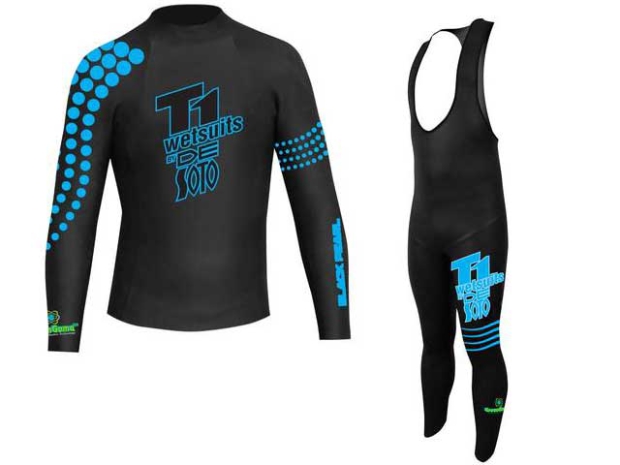
"I tested 6 different wetsuits from 3 separate manufacturers, in Small and Medium sizes just to make sure it wasn't a mis-fitting that was causing my fullsleeve discomfort,” said one reader. "I could fit fine into the sleeveless for all manufacturers, but the fullsuit was more restrictive in all cases, likely due to my bulky lats.”
I don't dispute this reader's experience at all. It's the remedy I question. I'd love to know if a De Soto was one of the wetsuits this gentleman tested, and let me explain why this wetsuit is often the inoculant for the person who can't find a wetsuit that will fit.
Why does the T1 by De Soto fit so many people so well? Two reasons. First, the top and the bottom are not connected. This is a big deal. This is the big deal. As a wetsuit maker one big challenge in patterns was getting the torso right. There's a fixed distance between the crotch and the shoulders. If the wetsuit is too short in the torso, the suit is tight up into your crotch but it's still pulling down hard on your shoulders. Hence shoulder immobility.
Too much room in the torso area of the suit, you get that roll of rubber around your belly, or the suit is just too roomy. You'll end up swimming in galoshes.
Now, to be clear, most folks don't have this problem. Most folks will fit into a one-piece wetsuit just fine. But, more of the population has this problem than is reflected in the market share of this wetsuit, which is why this wetsuit is undersold and overneeded.
The second reason this suit fits a lot of folks nicely is that you can mix and match tops and bottoms. The fellow who had the V shaped shoulders might have found the T1 a very comfortable suit had he given this one a try.
That said, why fight it? Why not just buy a sleeveless? Because they're slower. They're slower. They're always slower. For everybody. I confidently say this for the following reasons: First, as noted, every ITU racer races in a fullsuit. So, it's either mass hysterical groupthink or they all know something. Second, I've been testing this since 1986. No class of swimmer swims faster in a longjohn. Not really fast swimmers. Not really slow swimmers. Not women. Not men. Fullsuits are faster all the time. Long distance or short.
But there are folks who swim poorly in a fullsuit. Who are they? Folks who do not have the right fullsuit. Me, for example, I'm very comfortable in blue jeans. But I have a whole bunch of blue jeans that fit really bad. I'm a Levi 550 man. If you have the wrong fullsuit, it's like me trying to fit into Levi 501 jeans. Those days are behind me!
When you see a De Soto T1 at a race it's likely to be an older person using it. Why? Because it's also extremely easy on the shoulders. The older you are, it's not just your knees that give you trouble, but also your shoulders. It's extremely easy to get on and off. I corralled Björn Andersson at our local pool (he has a training camp in town). He'd never swum in a T1. He graciously swam a 50 for me (video above), and then took off the suit (with no coaching on how to get it off), so that I could video it. This suit is very easy on the shoulders and neck, and if it comes off slower than a 1-piece, it's not by more than a second or two.
"Fit and heat for me,” said one person on that forum thread. "I overheat fast in a full suit,” wrote another. Fair enough. But in my experience, this is often a tactical error and not limited to De Soto's wetsuits, but any fullsuit. If you overheat in a fullsuit, dollars to donuts you were overheated before you began your race. If you're in a fullsuit, leave it down to your waist if the air is warm (pull it down to your waist if it's more temp-comfortable pulled down than having up and ready). Then, pull it up, zip it up, only 5 minutes before your wave is schedule to go.
Features
A bit about this suit's features, or lack of them. The rubber is not my traditional favorite – Yamamoto – but its Green Goma rubber seems and feels very similar to Yamamoto's #39, which is pretty much the gold standard. It's got fatter arms than typical, which simply makes the suits faster. Way back when – and I mean a quarter century ago – we were the first wetsuit company of any sort (tri, surf, dive, sailboard) to make our suit's arms out of 1.5mm thick rubber (I built my own factory, my office was in it, and we taught ourselves how to make suit arms with rubber considered not possible to glue and stitch). But we did that because rubber back then was not flexible and supple. Now, it is. But the habit of continuing to use ultrathin rubber persists, and it is not the fastest rubber to use in a wetsuit.
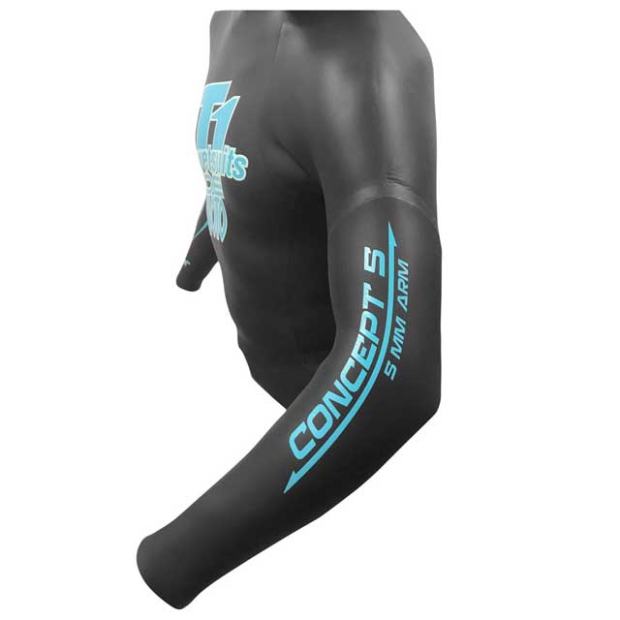
The Concept 5 emphasizes thicker rubber in the arms. You can see what the arm looks like above. This is purely a speed feature.
There is no pulling panel in the forearm of a De Soto T1. We were the first to put pulling panels into wetsuits, 25 years ago. And we sold them. Or, at least, took orders for them. But then, belatedly, I thought it prudent to actually speed test my pulling panels. They were slower than no panels. I canceled the orders. Remade our brochures without that suit. Cost me a lot of money! But, as the engineers say, one test is worth a thousand expert opinions.
Emilio De Soto has chosen to eschew a standard feature, reasoning that there's no value in a feature unless that feature adds value. (This isn't to say that no one's pulling panel works, just, it's not possible to tell by looking at it.)
One thing, and this is purely anecdotal, the Green Goma limestone-based rubber seems to have a smaller incidence of allergic reaction to neoprene. We ran into this every year. Not a lot. And, if you sell 15,000 or so thousand wetsuits a year, as we did, even a small incidence of this allergy is going to pop up. If you're allergic to wetsuit rubber you may want to give De Soto a try.
Finally, note the arms on the suits of these women. You'll see a case where the arms are too long. De Soto has a protocol for taking back a wetsuit, professionally cutting the arms and/or legs to fit, and sending it back. Or, coaching you to cut it yourself (best to just send it back and have them do it).
Speed
I have never found the T1 in all my testing to be faster than, say, ROKA or blueseventy. Neither have I found it slower. At the top end, the very good fullsuits are all fast. If they fit! Which explains I think why some folks find fullsuits slower. A bad-fitting fullsuit is not a virtue.
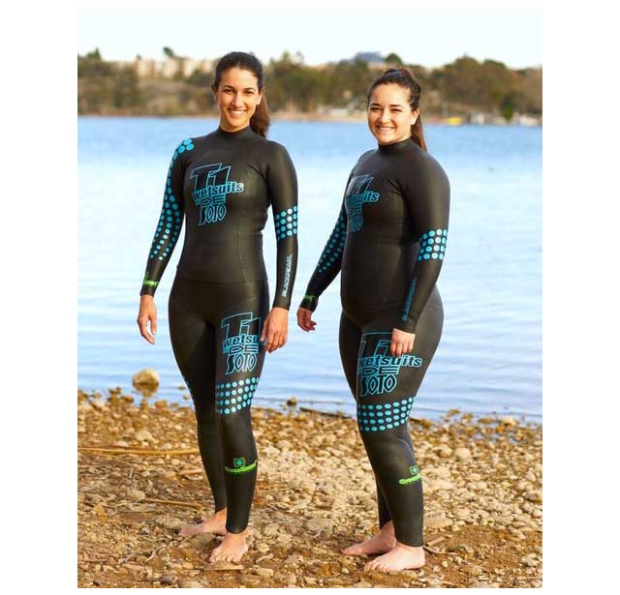
But I've never subjected the Concept5 to the raft of comparative speed tests and I'm going to do so this Spring. I'll let you know.
Conclusion
The reason I'm high on this wetsuit brand, and the reason I began my wetsuit overview with the T1 by De Soto, is that there are 10 or 15 very good companies making good suits. Some are really good. There are really great suits; really great values; but there is only one suit like this and I think you see from the photos I've included that this suit has the capacity to accommodate an audience other wetsuits struggle to successfully reach. This wetsuit is an example of an outreach to a morphologically diverse audience to which our sport has always failed to cater. It's an exercise in clever design. It's "grand fondo geometry” in a wetsuit.
It's not an alternative to a high performance wetsuit. It is a high performance wetsuit built in a way that accommodates a wider morphological range than does a typical 1-piece wetsuit. (If you look at the Björn video above I think you'll see that it's very successfully usable by an A+ competitor.)
There are two manufacturing disappointments in my lifetime in triathlon: The failure of the retail and consumer markets to understand the value in scaling the wheels of a bike to match the morphology of the rider; and the failure of more wetsuit brands to understand the utility of this style of wetsuit manufacture. The fact that so many wetsuit companies are struggling, lost in the crowd, unable to break out is entirely tied to their timid, provincial, uncreative approach to how wetsuits are made. In choosing the "safe" route companies have invited peril on themselves.
Read more about De Soto's wetsuits here.


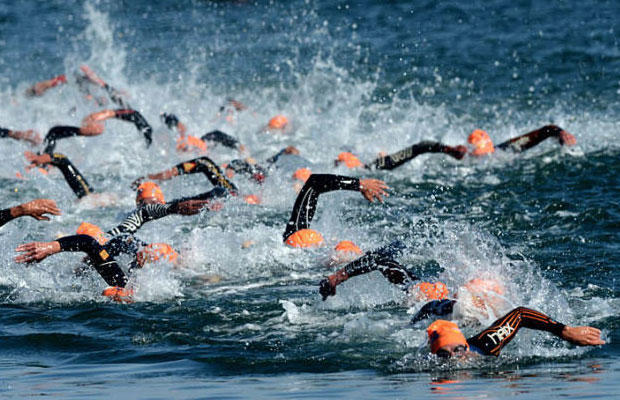
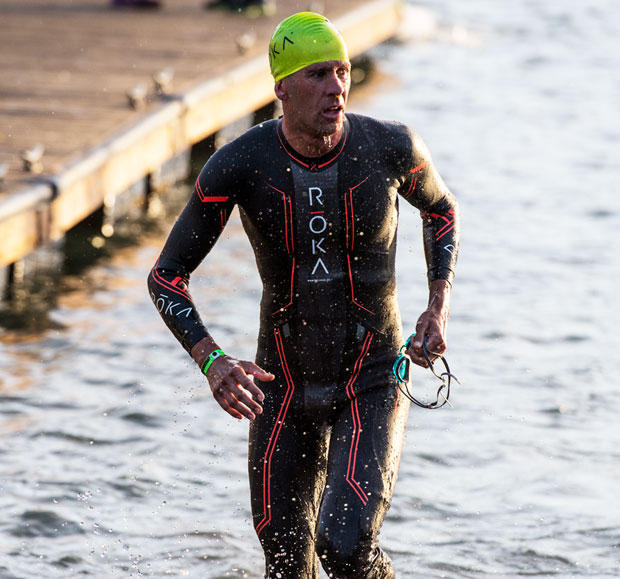
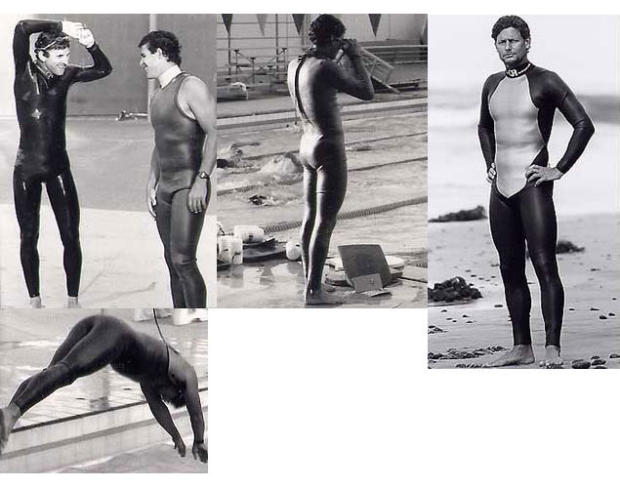
Start the discussion at slowtwitch.northend.network